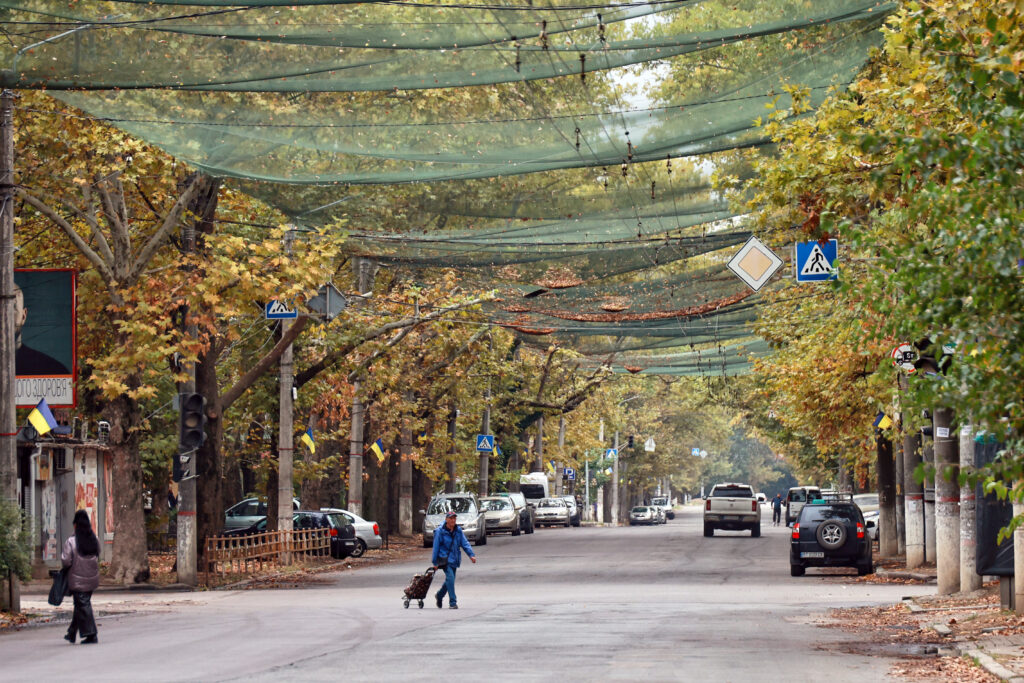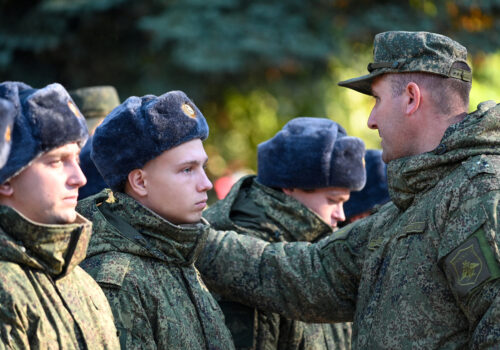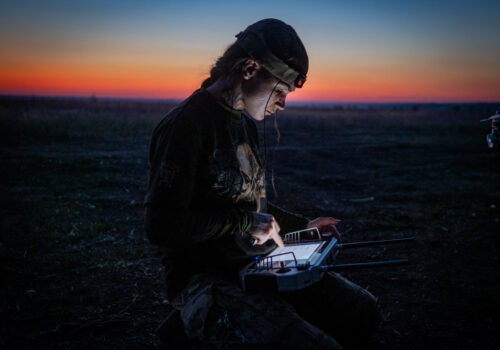On October 20, pensioner Larisa Vakulyuk was killed by a Russian drone while tending to her goats in the Ukrainian city of Kherson. The murder of the 84 year old Ukrainian grandmother was a deliberate act carried out by a Russian drone operator using a video camera to hunt his victim. There can be no realistic doubt that he knew exactly what he was doing. One week earlier, Russian drones attacked a United Nations convoy traveling in the nearby area, damaging two clearly marked lorries carrying humanitarian aid. “This is a reminder of the incredible dangers Ukrainians face every day to feed themselves,” commented UN World Food Program Country Director for Ukraine Richard Ragan.
These two incidents are part of a comprehensive Russian bombing campaign targeting the civilian population in the Kherson region of southern Ukraine. Kherson lies on the right bank of the Dnipro River, directly across the river from territory currently under Russian occupation, placing it well within range of Russian drone operators. Since summer 2024, Russia has been conducting an unprecedented drone offensive designed to terrorize local residents and render the entire region unlivable. The indiscriminate nature of these attacks and the scale of the killings have led some to label the campaign a human safari.
Stay updated
As the world watches the Russian invasion of Ukraine unfold, UkraineAlert delivers the best Atlantic Council expert insight and analysis on Ukraine twice a week directly to your inbox.
Anyone approaching Kherson is immediately made aware of the threat from above. The entrance to the city is marked by signs reading “Warning! Danger! Enemy Drones.” Meanwhile, major roads leading into the heart of Kherson and the Dnipro River are covered in improvised netting in a bid to offer some basic protection against the ever-present threat of Russian drones.
For local residents, Russia’s human safari has made sudden death from above an everyday fact of life. During the first nine months of 2025, more than a hundred people were killed and over one thousand were wounded in drone attacks. Those who remain say they feel hunted whenever they dare to leave their homes and venture out into the open air. A United Nations report released in May 2025 concluded that the Russian drone attacks were part of a systematic, coordinated state policy and constituted a crime against humanity.
The Russian side does not appear to have any serious reservations about the routine targeting of Ukrainian civilians in this manner. On the contrary, video footage of drone attacks on the Kherson population are posted online on an almost daily basis and are typically met with overwhelming approval. Nowhere is deemed off-limits by Russian drone teams. Targets have included private homes and residential buildings, cars, buses, and pedestrians. On numerous occasions, ambulances have been targeted as they have attempted to provide emergency care for victims of earlier attacks.
The hardest hit communities are those located along the banks of the Dnipro River and therefore closest to the Russians. In these riverside districts, Russian drones are a more or less constant feature circling in the sky and waiting to attack anything that moves. This makes it extremely difficult to repair damaged infrastructure or deliver essential supplies such as food and medicine. Instead, life has ground to a halt.
Eurasia Center events

Combating the Russian drone menace is a relentless technological struggle as each side races to innovate and evade the latest countermeasures. In practical terms, it is often difficult for the Ukrainians to cope with the very large numbers of drones deployed by the Russians. The present interception rate in late October of around 80 percent may sound impressive, but this means that 20 percent of drones are still getting through.
Kherson’s current predicament should set alarm bells ringing across Europe and beyond. The full-scale Russian invasion of Ukraine is widely recognized as the world’s first drone war. Moscow’s human safari tactics in Kherson offer a chilling window into what this could mean when military drone technologies are unleashed against civilian populations.
Based on what is known about the Russian human safari campaign in the Kherson region, it should now be abundantly clear that drones can potentially paralyze the life of any modern city. They can be used to leave the population without access to electricity, water, and heating, while also disrupting core supply chains and even preventing people from setting foot outside.
Few countries are currently ready to address this threat. Indeed, the recent appearance of small numbers of Russian drones in Polish airspace and above strategic sites such as airports across Europe has highlighted how unprepared many NATO members are to face the rapidly evolving challenges of drone warfare.
These challenges are nowhere more immediately apparent than in Kherson, which has been living with the horrors of Russia’s human safari for more than a year. The fate of Kherson should serve as a warning to the wider world about the threat posed to civilians by military drone technologies. As countries seek to protest their populations, Ukraine’s unrivaled experience will prove priceless.
Oleksandr Tolokonnikov is Deputy Head of the Kherson Regional Military Administration.
Further reading
The views expressed in UkraineAlert are solely those of the authors and do not necessarily reflect the views of the Atlantic Council, its staff, or its supporters.

The Eurasia Center’s mission is to enhance transatlantic cooperation in promoting stability, democratic values, and prosperity in Eurasia, from Eastern Europe and Turkey in the West to the Caucasus, Russia, and Central Asia in the East.
Follow us on social media
and support our work
Image: People cross a street protected by anti-drone nets in front-line Kherson, Ukraine, on October 2, 2025. (Photo by Nina Liashonok/Ukrinform/NurPhoto)





